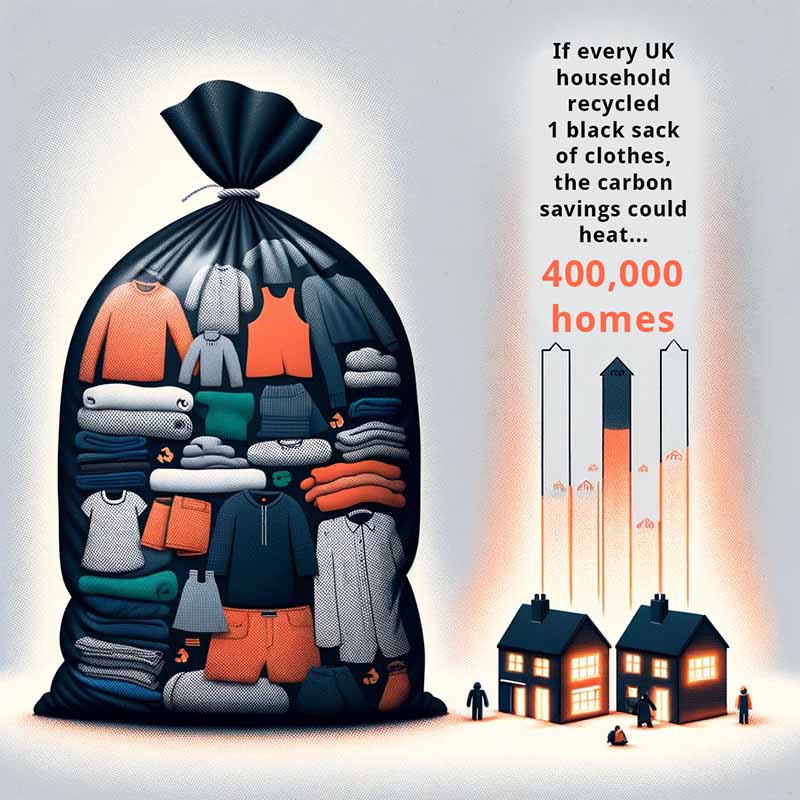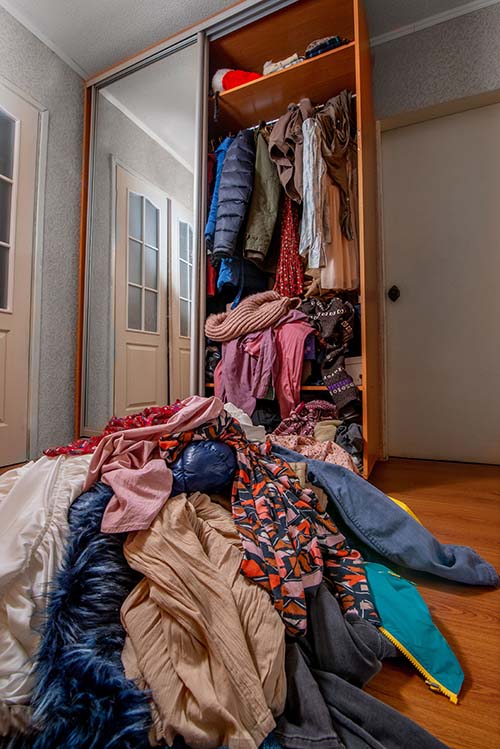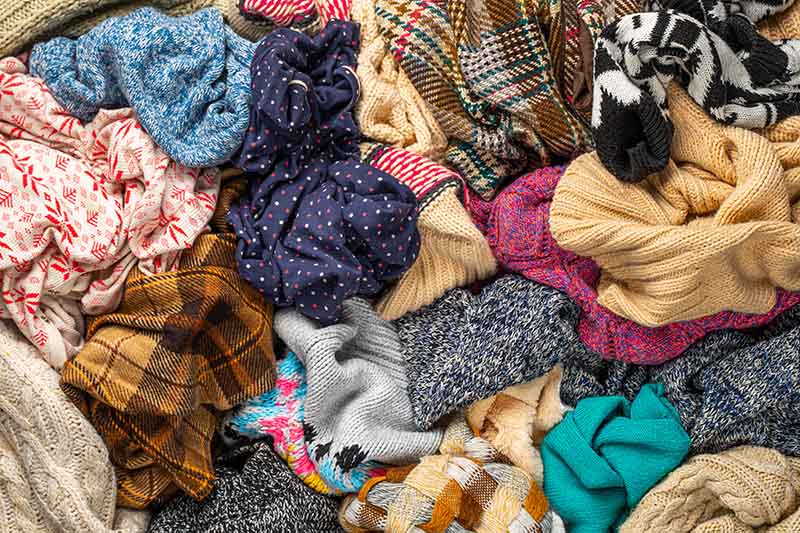Green Power: The Environmental Benefits of Recycling Clothes

Have you ever stopped to think about the impact your wardrobe can have on the environment? In our ecologically conscious world, recycling clothes stands out as a straightforward yet impactful way to reduce our environmental footprint.
The Positive Impact of Textile Recycling
It's a surprising fact: If every UK household recycled just one black sack of clothes each year, the carbon savings could heat over 400,000 homes. This is a practical example of how minor changes can yield significant environmental benefits when we each make a small change.

Textile recycling is more than just reducing waste. It's a commitment to a sustainable cycle that positively impacts our planet. By recycling, we're not only decluttering our homes but also contributing to lower greenhouse gas emissions, decreasing landfill reliance, and conserving resources.
Let's take a deeper look into why recycling clothes is particularly beneficial for the environment.
Understanding the Lifecycle of Textiles: Why Recycling Matters
The true value of recycling clothes lies in the lifecycle of textiles and the resources conserved at each stage. From saving water that would otherwise be used in producing new garments to reducing energy consumption in manufacturing and transport, each recycled item paves the way for a more sustainable future.
Next, we'll explore the environmental benefits of textile recycling and share practical tips to integrate recycling seamlessly into your everyday life.
Textile Recycling in Numbers: A Clearer Picture

Grasping the full impact of textile recycling is vital. At HIPPO, we've compiled statistics that vividly illustrate the difference even a single bag of recycled clothes can make. If all 28.2 million UK households recycled a standard 120-litre black sack of textiles yearly, we could see a reduction of over a million tonnes of CO2 emissions1. This amount exceeds the yearly emissions of several UK cities, including Newcastle Upon Tyne, Nottingham, St Albans, and Brighton & Hove2.
Textiles, particularly synthetic fibres, require significant resources to produce. Each recycled garment saves energy, water, and raw materials, helping to reduce the carbon footprint of new textile production. Moreover, recycling diverts these materials from landfills or incinerators, giving them a new purpose and easing the pressure on waste management systems.
From Waste to Worth: The New Life of Recycled Textiles
Recycled textiles are repurposed into a myriad of everyday items, demonstrating the versatility and environmental benefit of recycling. By giving new life to discarded fabrics, we not only reduce waste but also foster innovation in sustainable product creation. Here are a few examples:
- Eco-Friendly Fashion: Numerous brands are crafting stylish clothing lines from recycled materials, appealing to the environmentally conscious shopper.
- Sustainable Home Insulation: Recycled textiles are being transformed into insulation materials, offering an eco-friendly alternative to traditional options.
- Furniture Upholstery: From sofas to armchairs, recycled fabrics are increasingly used in furniture upholstery, marrying comfort with sustainability.
- Automotive Interiors: The car industry is incorporating recycled fabrics into vehicle interiors, contributing to more sustainable manufacturing processes.
These applications are just the tip of the iceberg, showcasing the creative potential of recycled textiles.
Navigating the Challenges of Textile Recycling

Despite its benefits, many find the idea of recycling textiles daunting. Concerns about the complexity of the process and fear of making mistakes often discourage participation. However, with a bit of knowledge, recycling becomes a straightforward part of our daily routine.
In the UK, household recycling rates have plateaued at around 45%3, falling short of the government's 65% target by 2035. This gap is often due to confusion over what can be recycled. At HIPPO, we're committed to clarifying this with our easy-to-follow recycling at home guide, found here, simplifying the process for everyone.
Additionally, our HIPPOBAGs offer a hassle-free solution for waste removal. Over 95% of all the waste we collect is diverted from landfill and we work very hard with our selected partners to maximise the amount of waste that is recycled, whether ultimately into other products, or to generate energy. For details on what can be included in a HIPPOBAG, visit our FAQ section here.
By addressing these challenges and embracing solutions like HIPPOBAGs, we can collectively improve our recycling habits and environmental impact.
Recycling Clothes: A Key Player in Climate Change Mitigation
Recycling clothes does more than reduce waste—it's a vital component in the fight against climate change. Each recycled garment lessens greenhouse gas emissions, contributing to global efforts to curb global warming.
The fashion industry is a significant carbon emitter, largely due to its resource-heavy production and waste generation. By recycling textiles, we not only prevent them from ending up in landfills, where they decompose and release methane, but also curb the demand for new clothing production, reducing the industry's overall carbon footprint.
This shift towards a circular fashion model, where clothes are reused and recycled, is critical in transitioning to a sustainable industry. By recycling, we conserve resources like water and energy—manufacturing a new cotton shirt, for example, can consume over 2,700 litres of water. Embracing recycling is a proactive step in the global effort to mitigate climate change.
Fostering Sustainable Actions Through Recycling
The simple act of recycling clothes carries immense potential for shaping a more sustainable future. It's a proactive stand against the throwaway culture, aiding in reducing greenhouse gas emissions and conserving essential resources. It reflects our understanding of our role in the ecosystem and our commitment to the planet.
At HIPPO, we strive to simplify and promote recycling. With resources like our comprehensive recycling guide and the convenient HIPPOBAGs, we aim to empower individuals to make environmentally responsible choices easily.
We invite you to join this movement. Declutter your wardrobe, recycle unused textiles (including bedding, towels and your clothes), and be part of the positive change. Remember, in the battle against climate change, every small action counts. Together, we can forge a greener, more sustainable future - one garment at a time.
[1] One bag of textiles estimated at 12.4 kg contained within a standard 120 litre black sack. There are 28.2m households in the UK. 28.2m x 12.4kg = 349.68m kg. Using https://recyclewits.com/tools-calculators/carbon-footprint-savings/ 349.68m kg will save 1,178,421,600 kg of CO2, or 1.17m metric tonnes of CO2.
[2] Based on 2019 – 2020 figures: https://www.utilitybidder.co.uk/compare-business-energy/co2-producing-uk-cities/ Newcastle Upon Tyne (1.159 metric tonnes of CO2) Nottingham (1.095 metric tonnes of CO2) St Albans (0.838 metric tonnes of CO2) Brighton & Hove (0.801 metric tonnes of CO2)

